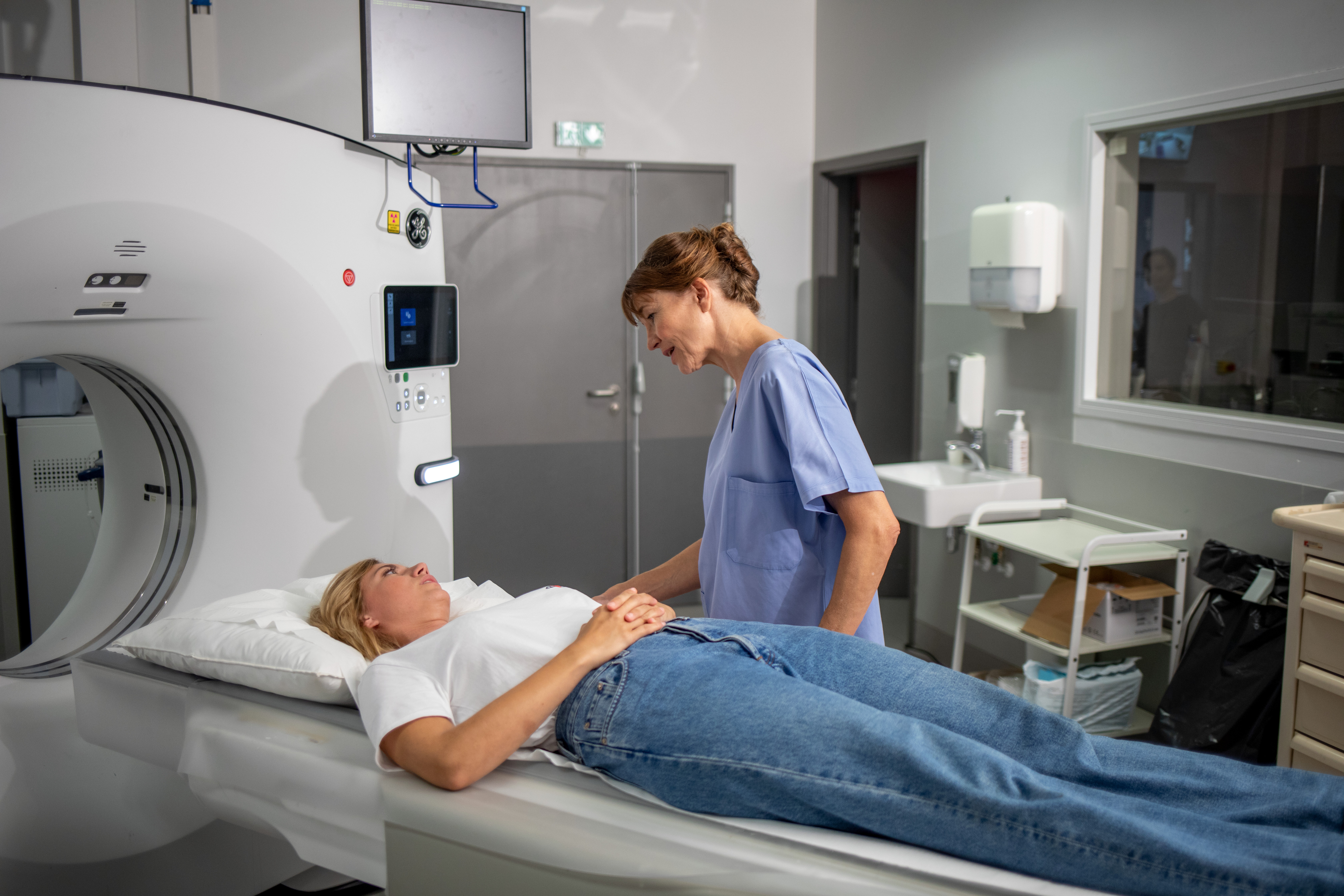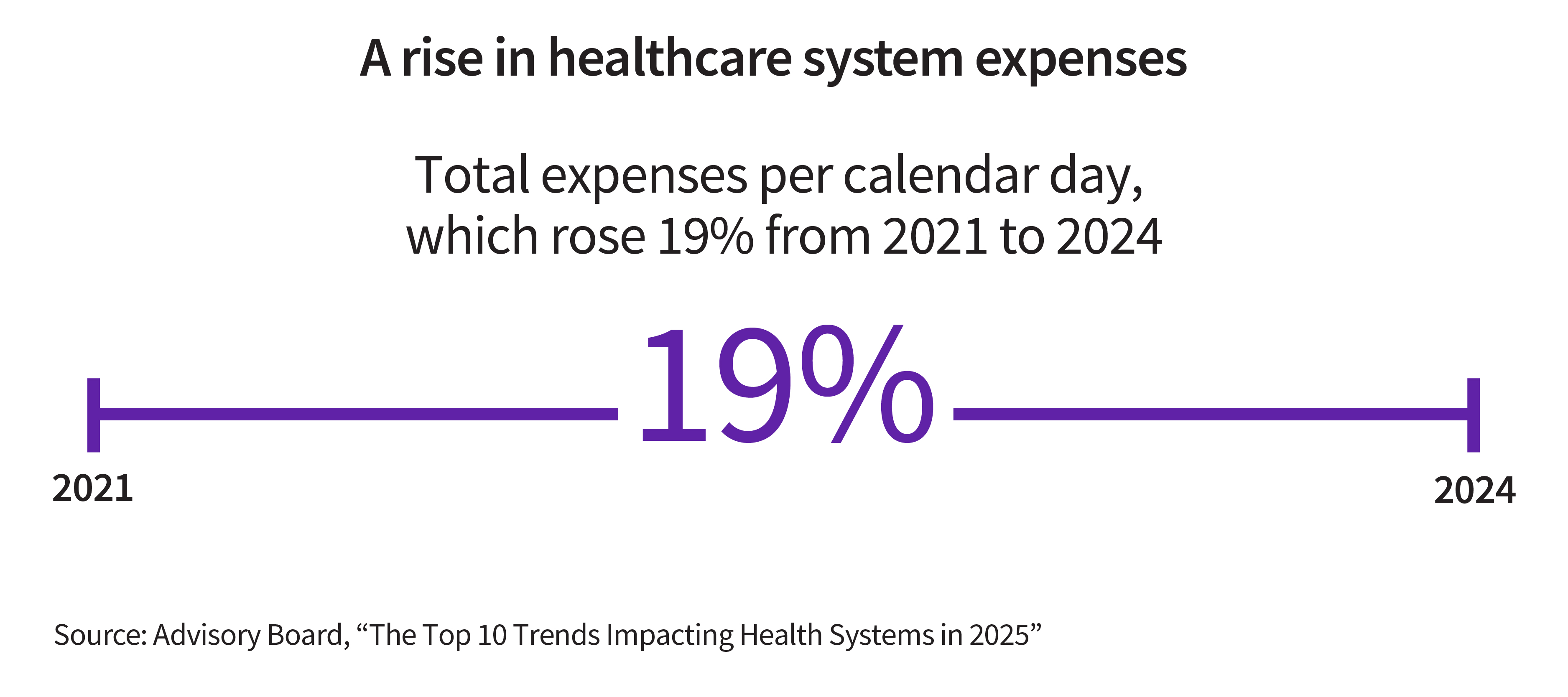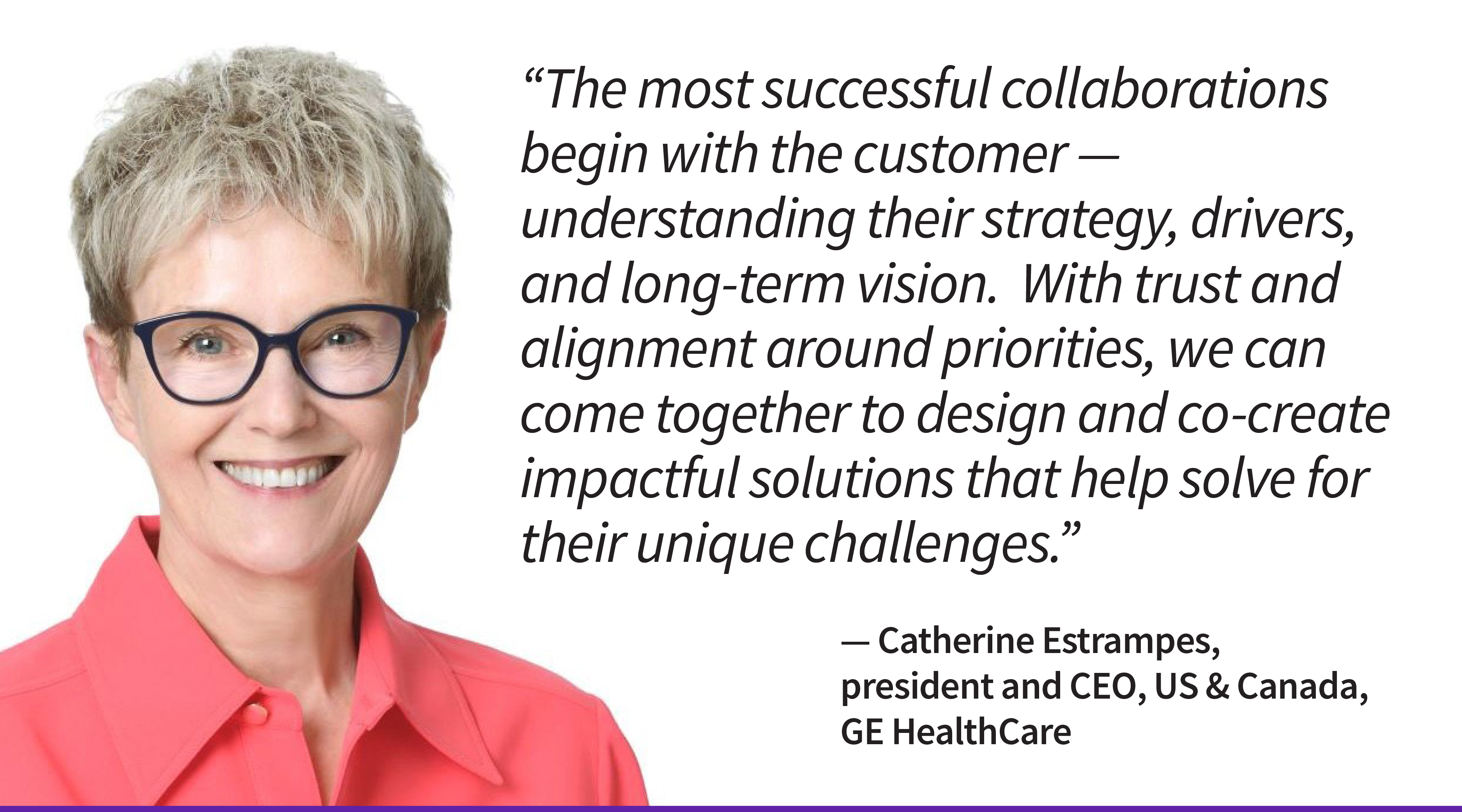By Catherine Estrampes, president and CEO, U.S. & Canada, GE HealthCare
From gaining value from merging healthcare systems to driving more efficient workflows, tailored solutions are required to solve for unique challenges.
Hospital and healthcare systems are changing in ways that require holistic healthcare solutions. From consolidation and aging equipment fleets to a shift toward outpatient care and a need to drive efficiencies with improved workflows, hospital and healthcare system leaders are balancing growing patient backlogs with clinician shortages and rising costs, and looking to make the proper investments for the needs of today while looking ahead to the needs of a decade from now. Instead of fragmented purchases, there is growing need for enterprise-wide approaches with healthcare solutions partners who have insights and expertise across clinical, operational, technical, and financial considerations.
To continue to provide quality patient care, where so much of a health system—and a patient’s health experience—is interconnected, we must address these dynamics holistically and through collaboration.
From our perspective, the most successful collaborations begin with the customer—understanding their strategy, drivers, and long-term vision—and together designing and co-creating impactful solutions that can help solve for their unique challenges and build pathways forward with clear metrics and a governance structure to keep us on track.
That is what drives our teams throughout GE HealthCare: turning patient and clinical challenges into opportunities to advance progress in healthcare.
Connected care can create value at scale
Over the past three decades, U.S. healthcare systems have seen dramatic change. With the increase in healthcare system consolidation—whether it’s hospital systems merging or systems acquiring physician practices—the landscape is complex. As a result, more than 75% of the hospital beds in the U.S. are within hospital systems.
As care models continue to evolve, C-suite leaders are working to optimize operations across their expanding enterprises, such as by standardizing workflows, addressing impacts of various equipment and technologies coming together across systems, and finding an appropriate balance between inpatient and outpatient capacity. And questions arise: How can we efficiently bring numerous systems together? How are we accounting for variances in locations, whether urban or rural? Do we not only have the right equipment, but have it in the right place? How are we viewing different types of care centers—each with unique needs? A deep understanding of clinical, operational, technical, and financial considerations is required to solve for these challenges with unique solutions specifically designed to increase patient access, drive growth and thus create value for the healthcare system.
Our Care Alliance with Sutter Health, a leading U.S.-based not-for-profit health system serving 3.5 million people per year, is a customized, clinician-focused approach to help boost capacity and expand access points. We jointly designed this collaboration to provide our latest imaging technology in the right settings for Sutter Health, with the aim of serving patients in the most efficient way throughout their care journey, closer to home.
Equipment optimization facilitates efficient investments
Medical advancements continue to bring clinicians the tools they need to deliver faster, more precise diagnoses and customized treatment plans for patients. However, aging equipment fleets can prevent providers from taking advantage of these developments. Around the world, about 30% of the equipment is more than 10 years old, and 14% to 30% of imaging systems are at the end of their useful life. In the United States, nearly half of all imaging systems remain in service up to nine years beyond their average useful lives.
As leadership teams all across the C-suite look for ways to drive growth and value, prioritization of investments to rationalize spending is critical. They must consider how a modernized fleet can potentially drive revenue with increased patient scans, how the patient experience might be improved, and how their clinicians are equipped and trained to get the most out of new equipment. Imaging is an area that has the potential to impact access, revenue and profitability—making it a priority investment area and prompting interest in multi-year, multi-modality agreements.
Through our expanded Care Alliance collaboration with Hartford HealthCare, we are able to bring our latest technology and optimize clinical capabilities now and in the future—over the course of years. Such collaborations help us to innovate together with our customers, with the intent of improving patient access and care. Whether our service engineers are in-house to repair and maintain equipment or we’re regularly updating to optimize with the latest technology, such collaborative relationships are critical to driving maximum performance and longevity of equipment with a focus on patient safety.
Strengthening access to care requires innovative approaches
Chronic conditions, such as heart disease, stroke and cancer, now cause three-quarters of all deaths worldwide, fueling increased demand for imaging and for services in specialties such as cardiology, oncology and neurology. Healthcare systems are developing centers of excellence or service lines that center on patients’ experiences with these conditions. At the same time, care models are shifting as a growing emphasis on outpatient services spurs healthcare leaders to rebalance staffing and deploy new technologies.
However, long-standing pressures are limiting providers’ ability to respond to changes in demand. First, reimbursements aren’t keeping pace with rising costs: Healthcare systems’ total expenses per calendar day increased 19% from 2021 to 2024. In addition, clinician burnout is contributing to ongoing labor shortages that compound the strain on capacity. Worldwide, 42% of clinicians say they are considering a career change. In the U.S., 138,000 nurses left the industry between 2022 and 2024, and 40% intend to leave by 2029.
Our collaboration with Children’s Mercy Hospital, voted one of the United States’ best children’s hospitals and ranked in all 11 specialties by U.S. News & World Report, helps deliver on the hospital’s commitment to children’s health. With operational efficiency a top priority across the organization, GE HealthCare created the nation’s first pediatric hospital operations center, bringing operational efficiency to benefit patients, families and staff so clinicians are positioned to provide high-quality care at the right time and in the right place. With staffing challenges and pipeline issues a top concern for leaders, improving clinician efficiency and streamlining daily workflows helps create gains that positively impact staff and patients.
Innovation requires thinking differently
Whether we’re solving for today’s challenges or tomorrow’s, the right blend of people, process and technology is required. GE HealthCare’s continued investments are focused on becoming transformational partners for our hospital and health system customers. With trust, transparency and a willingness to work together, we’ll continue to create solutions to solve for healthcare’s greatest challenges.
And no matter how difficult—it matters. It’s all in the pursuit of improving every patient’s outcome.





